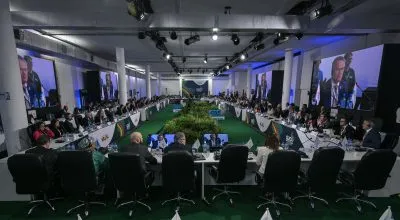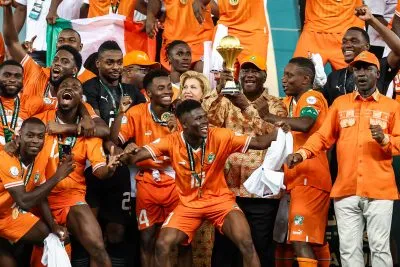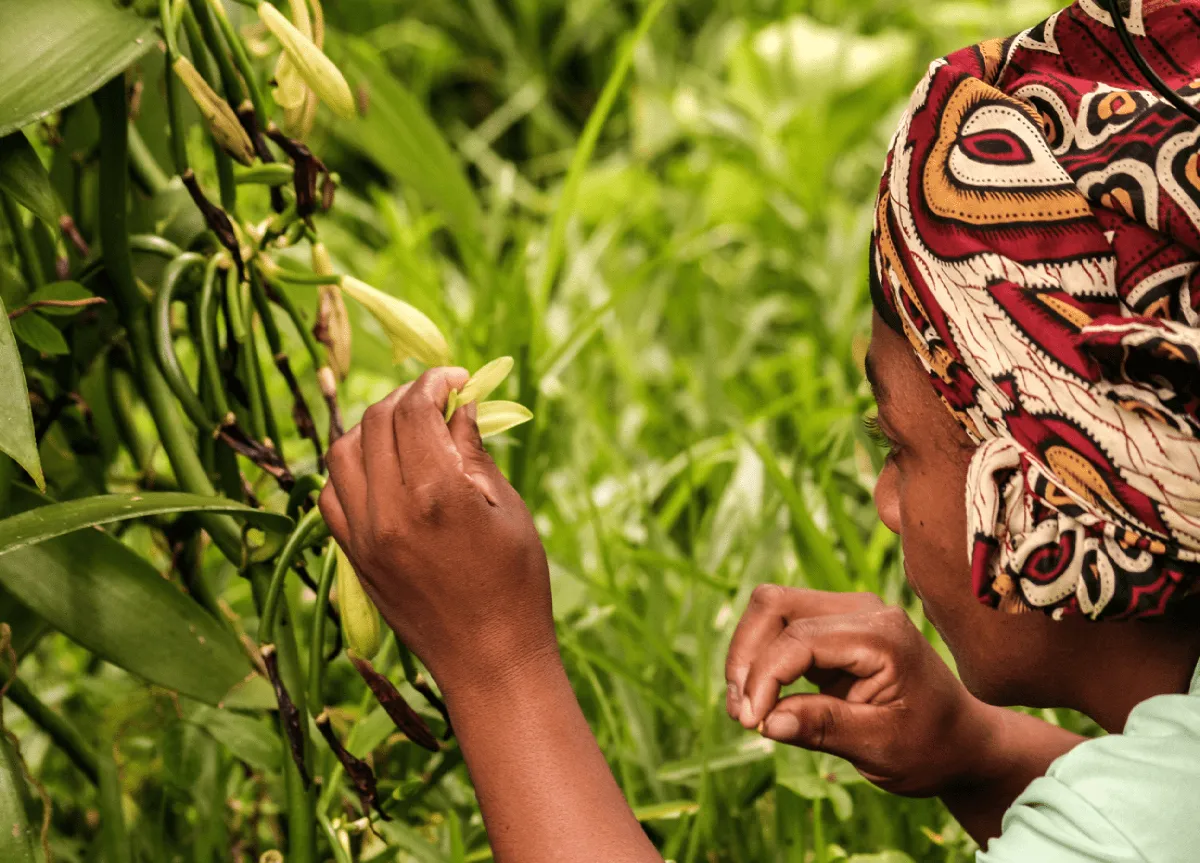In Artist and Empire, a major new exhibition that has just opened, there are witty late 19th/early 20th century sculptures from West Africa, busts of British colonial officials. There’s District Commissioner W. Ross-Brown with his twirling moustache and tweed cap. Queen Victoria, her sculptor clearly fascinated by her power, is symbolised by her crown and majestic bosom. The explorer Mary Kingsley is beautifully observed, sternly looking down her long nose, but her pedestal still accords her the same prominence and status as the men.
Are they a satirical send-up of British officials or a sympathetic adaptation of local artistic conventions to portray them? They were made by an unknown Ibibio artist in what is now southeastern Nigeria. How were these used and what function did they have? We don’t know, their history is missing. Possibly they were commissioned by traders and brought back to Britain by people in colonial service. But they are hidden gems, donated to the museum around 1900. This two-way cultural traffic of empire is what this bold and timely exhibition aims to explore and reassess.
At its peak, the British empire was the largest empire the world had ever seen and from 1815–1914 the foremost global power. It covered almost a quarter of the world’s land area, with a fifth of the world’s population. It was responsible for some of the largest migrations of people the world had seen – until this year – so its theme of changing demographics is particularly relevant now.
“We know that Britain’s acquisition of an empire transformed the world,” writes Paul Gilroy, the renowned academic and cultural historian of the black diaspora, in his introduction to the exhibition. Of Guyanese heritage, he is himself a product of empire. “The aftershocks from both the administration and the undoing of that unique, planetary enterprise are still reverberating.”
Stretching from the 16th century to the present day, Artist and Empire displays over 200 paintings, drawings, photographs, sculptures and carvings. It’s the first time all these exhibits from Britain, North America, the Caribbean, the Pacific, Asia and Africa have been gathered together. And what we see is the fusion and intermixing of cultures.
Dr Alison Smith, the co-curator of Artist and Empire, has been working on it for the past three years. “It’s probably the first exhibition about the British empire seen through the lens of art. We want to get a perspective on empire to show some of the ways it has shaped British art. Typically in literature about the British empire, the pictures are secondary to the text but we’re reversing that and letting the images lead to show how their status and meanings have changed over time and how these inanimate objects unravel the complex and unfolding history of empire.”
The exhibition spans six rooms. Each space is different: maps and charts; patterns of collecting; representation of ‘heroic’ events; transcultural cross-dressing; and on-the-spot representation including depictions of colonisers by the colonised. The exhibition ends by considering transcultural modern art which arose from the conditions of empire. This gives way to contemporary artists whose work reflects back on empire.
“We want to attract a broad audience,” Dr Smith explains. “Everyone has a relationship with empire. We have beautiful objects and through them our visitors will become aware of these very rich interconnected histories. We want to let the objects tell their own stories.
“The subtitle of the exhibition is Facing Britain’s Imperial Past – and that’s what we’re trying to do, bring the subject into the open rather than gloss over it. Of course empire has relevance today in both a positive and negative way.
“The exhibition features works by unknown artists as well as by famous ones such as Reynolds and Sargent. We want to give all objects an equal sense of presence, so they can be appreciated for their own intrinsic artistic qualities. We look at legacies, resonances and ambivalences. After the Second World War, many people were embarrassed about colonial history and around this time many military paintings were moved to regimental museums. It’s difficult now to see some of the stereotypes of other races.
“The exhibition does address some really painful issues and we need to be open about this. We want to show how empire has contributed to the globalised culture that is Britain today. We’re not trying to hide any aspect of it. It’s there. One painful subject is slavery. There’s very little visual evidence of the transatlantic traffic in slaves and one could argue that this helped people ignore the brute reality of the slave trade.”
To help with interpreting the exhibits, there are audio points where people can listen to commentaries and different speakers about a subject to give it a broader perspective.
“The contextualisation and interpretation are done in a sensitive way to engage our audience and be receptive to different histories,” Dr Smith says. “We really hope that the exhibition will attract people from the former colonies. It’s their history, our collective history really. Another focus is on individual stories, the tragedies, the dramas.”
“Art can foster and enrich the new assessments of these matters that are so urgently required. Innovative exercises of this kind will help to reconcile the tasks of remembering and working through Britain’s imperial past with the different labour of building its post-colonial future,” Gilroy concludes.
Alexa Dalby
Artist and Empire: Facing Britain’s Imperial Past is at Tate Britain, London, until 10th April 2016.
Want to continue reading? Subscribe today.
You've read all your free articles for this month! Subscribe now to enjoy full access to our content.
Digital Monthly
£8.00 / month
Receive full unlimited access to our articles, opinions, podcasts and more.
Digital Yearly
£70.00 / year
Our best value offer - save £26 and gain access to all of our digital content for an entire year!
 Sign in with Google
Sign in with Google 




